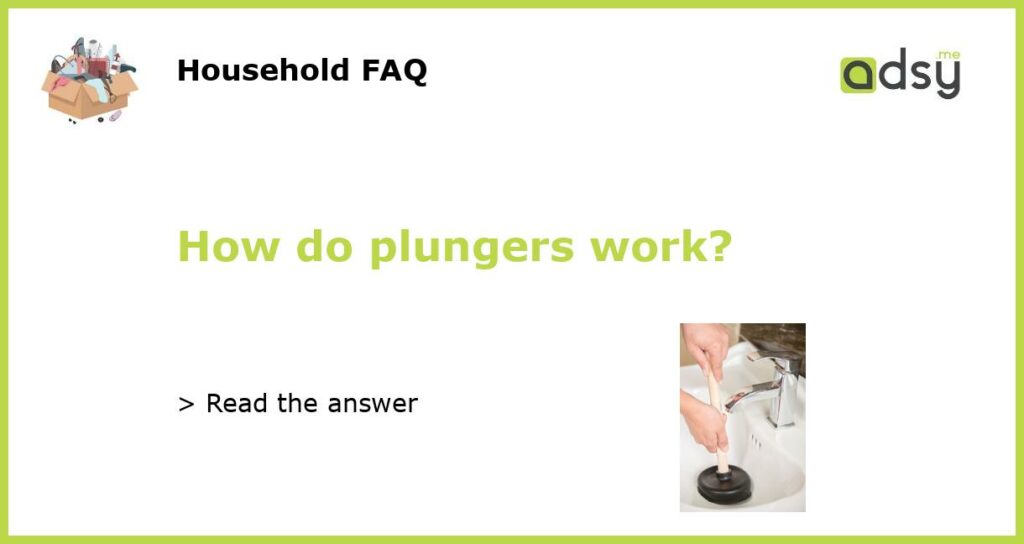What is a plunger?
A plunger is a simple and effective tool used to unclog drains and toilets. It consists of a rubber cup attached to a handle. When the plunger is pressed down against a drain or toilet opening and then pulled up forcefully, it creates suction that can dislodge blockages and restore flow. But how exactly does a plunger work? In this article, we will explore the science behind plungers and understand the mechanisms that make them effective in clearing clogs.
The principle of suction
At the core of a plunger’s functionality is the principle of suction. When you press the plunger down against the drain or toilet opening, you create an airtight seal between the rubber cup and the surface. As you pull up on the plunger, the suction is created. This suction forces the water and air trapped inside the drain or toilet to move upward, leading to the dislodging of the blockage. The suction created by the plunger helps to break up the clog and push it out of the way, restoring proper flow.
Air pressure and movement
In addition to suction, the movement of air and water is also crucial in the plunger’s effectiveness. As you push the plunger down, you are compressing the air inside the drain or toilet. This increase in pressure builds up potential energy that is released when the plunger is pulled up. The sudden release of this energy creates a surge of air and water, which can break through clogs and force them out. The repeated motion of pushing and pulling the plunger creates a back-and-forth movement of air and water that helps to dislodge the blockage.
Use of water as a medium
Water plays a vital role in the plunger’s functionality. When using a plunger on a drain, it is important to fill the sink or tub with enough water to cover the rubber cup of the plunger. The water acts as a medium that helps to transmit the force of the plunger to the clog. As you push and pull the plunger, the water moves with it, increasing the effectiveness of the suction and the movement of air. The presence of water also helps to lubricate the drain pipe, reducing friction and making it easier for the clog to be dislodged.
Limitations of plungers
While plungers are a useful tool in unclogging drains and toilets, they do have their limitations. Plungers work best on clogs that are made up of soft materials such as hair, soap scum, or paper. They may not be as effective on solid objects or hardened materials. Additionally, plungers may not be able to clear severe blockages or those located deep within the plumbing system. In such cases, it is advisable to seek professional plumbing services to avoid further damage to the pipes.






